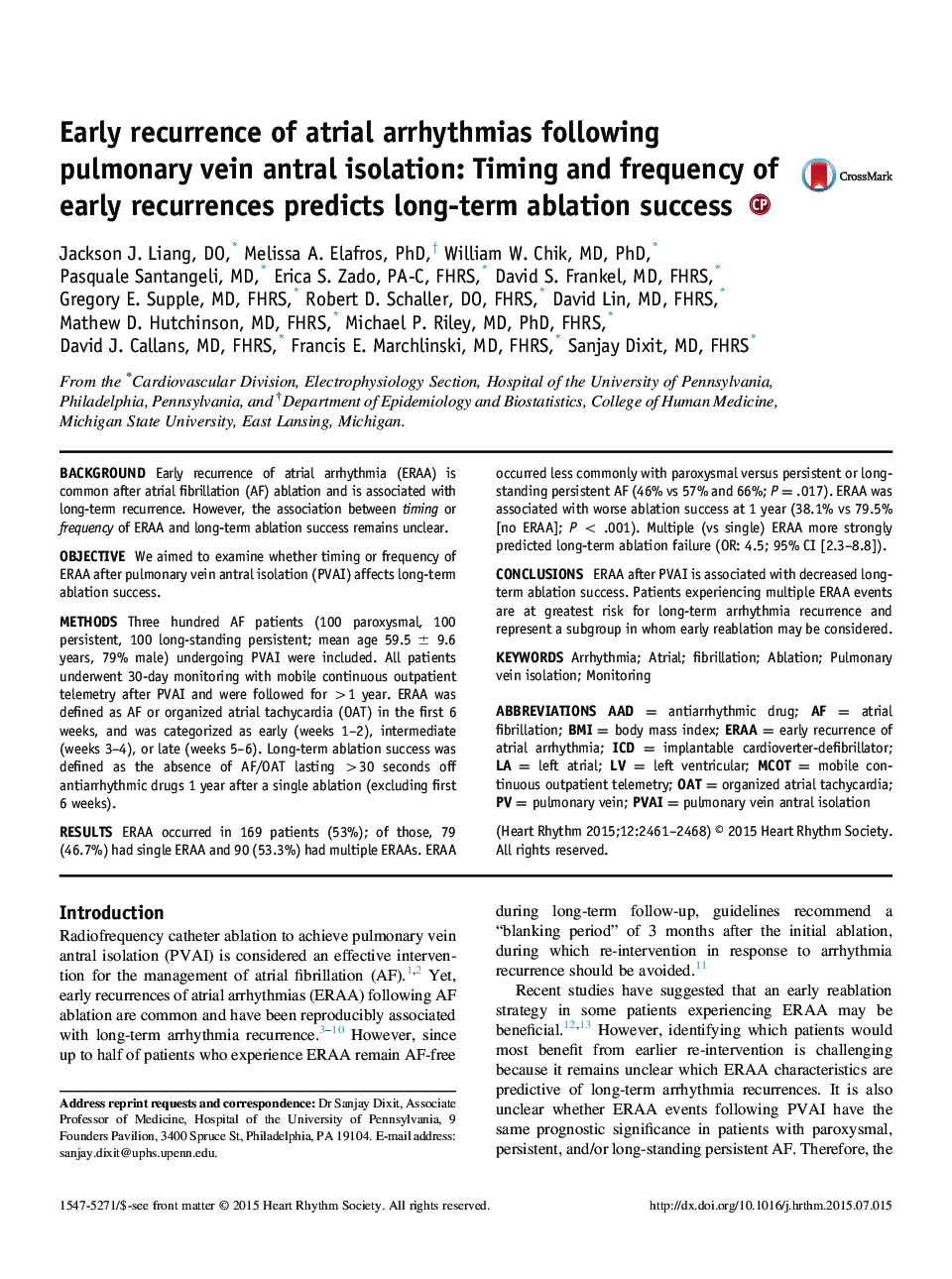| کد مقاله | کد نشریه | سال انتشار | مقاله انگلیسی | نسخه تمام متن |
|---|---|---|---|---|
| 2921804 | 1175804 | 2015 | 8 صفحه PDF | دانلود رایگان |
BackgroundEarly recurrence of atrial arrhythmia (ERAA) is common after atrial fibrillation (AF) ablation and is associated with long-term recurrence. However, the association between timing or frequency of ERAA and long-term ablation success remains unclear.ObjectiveWe aimed to examine whether timing or frequency of ERAA after pulmonary vein antral isolation (PVAI) affects long-term ablation success.MethodsThree hundred AF patients (100 paroxysmal, 100 persistent, 100 long-standing persistent; mean age 59.5 ± 9.6 years, 79% male) undergoing PVAI were included. All patients underwent 30-day monitoring with mobile continuous outpatient telemetry after PVAI and were followed for >1 year. ERAA was defined as AF or organized atrial tachycardia (OAT) in the first 6 weeks, and was categorized as early (weeks 1–2), intermediate (weeks 3–4), or late (weeks 5–6). Long-term ablation success was defined as the absence of AF/OAT lasting >30 seconds off antiarrhythmic drugs 1 year after a single ablation (excluding first 6 weeks).ResultsERAA occurred in 169 patients (53%); of those, 79 (46.7%) had single ERAA and 90 (53.3%) had multiple ERAAs. ERAA occurred less commonly with paroxysmal versus persistent or long-standing persistent AF (46% vs 57% and 66%; P = .017). ERAA was associated with worse ablation success at 1 year (38.1% vs 79.5% [no ERAA]; P < .001). Multiple (vs single) ERAA more strongly predicted long-term ablation failure (OR: 4.5; 95% CI [2.3–8.8]).ConclusionsERAA after PVAI is associated with decreased long-term ablation success. Patients experiencing multiple ERAA events are at greatest risk for long-term arrhythmia recurrence and represent a subgroup in whom early reablation may be considered.
Journal: Heart Rhythm - Volume 12, Issue 12, December 2015, Pages 2461–2468
